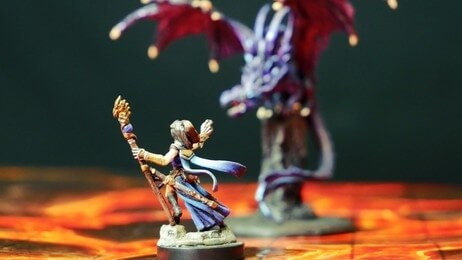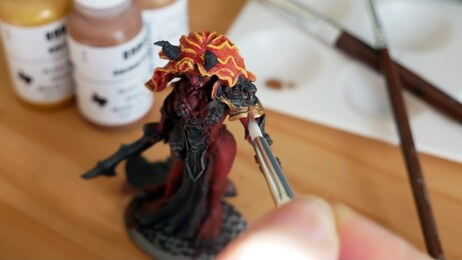Here at The Design Files, when you think we’ve explored every angle of design, we veer off-course to an unexpected yet captivating dimension. This time, it’s the remarkable world of Dungeons and Dragons (D&D). Are you fascinated by the realm of fantasy role-playing games, or perhaps merely intrigued by the meticulous artistry in miniature objects? How has this eminent game transformed over the years, and how do its figurines have such a significant impact on gameplay?
Surprisingly or not, there’s a deep connection between interior decor and the visually stunning D&D terrain. Both thrive on aesthetics, meticulous planning, and an insatiable drive for creativity. In this detailed exploration, we’ll dissect how D&D miniatures have evolved over the years, and why their influence on gameplay is profound and undeniable.
A Brief Inception of D&D-
From its early inception in 1974, Gary Gygax and Dave Arneson, the masterminds behind D&D, captivated the hearts and minds of players worldwide. Small lead figurines were initially used to strategically map out the fantasy world on grid-lined terrain. However, miniatures were not predominant until the 1980s and 1990s when companies like Ral Partha Enterprises took the lead, leaving an unmistakable mark in the industry.
The Artful Evolution of D&D Miniatures
As with any design evolution, D&D miniatures have seen a world of change. Starting with simple lead figurines, the progression to exquisite, hand-painted plastic miniatures is nothing short of artistic brilliance. Game-lovers and hobbyists alike appreciate the eyes for detail and the vibrant colors that elevate the gaming experience.
Miniatures and Gameplay: An Indelible Impact
More than just game pieces, miniatures serve as a visual representation of D&D’s fantasy world. They amplify the gaming experience, enabling players to visualize encounters, strategic positions, and character actions. As a result, miniatures allow for increased immersion and engagement in the game.

The Pros and Cons of Miniature
Despite their appeal, using miniatures in D&D isn’t all smooth sailing. They add complexity while enhancing visual appeal, but some argue that they detract from the game’s imaginative aspect. Still, the growing popularity of miniatures bears testimony to their overall impact.
Stepping Outside the Box: D&D Miniatures Beyond Gameplay
Taking a step further, D&D miniatures are not confined to gameplay alone. They have seeped into the arena of interior design as eclectic, charming decor elements in game rooms and offices, pushing the boundaries of conventional design aesthetics.
The Future of D&D Miniatures
With technological advancement, D&D miniatures might soon leap from physical to digital setup. Augmented and virtual reality are beginning to play a role, creating dynamic, interactive, and visually stunning experiences. The shift promises to revolutionize the D&D landscape, however, the traditional artistry in these miniatures is irreplaceable.
Concluding The Evolution of D&D Miniatures: Reflecting on the Impact
With an artistic evolution and an expanding role beyond game boundaries, D&D miniatures have truly left an indelible impression. Their intricacy, variety, color and uniqueness feed the joy and thrill of the game. Whether viewed as a mere game embellishment or a crucial strategy component, their influence on D&D gameplay cannot be downplayed. From tabletops to futuristic digitization, these miniatures are bound to inspire, engage, and enamor players and designers for generations to come.








